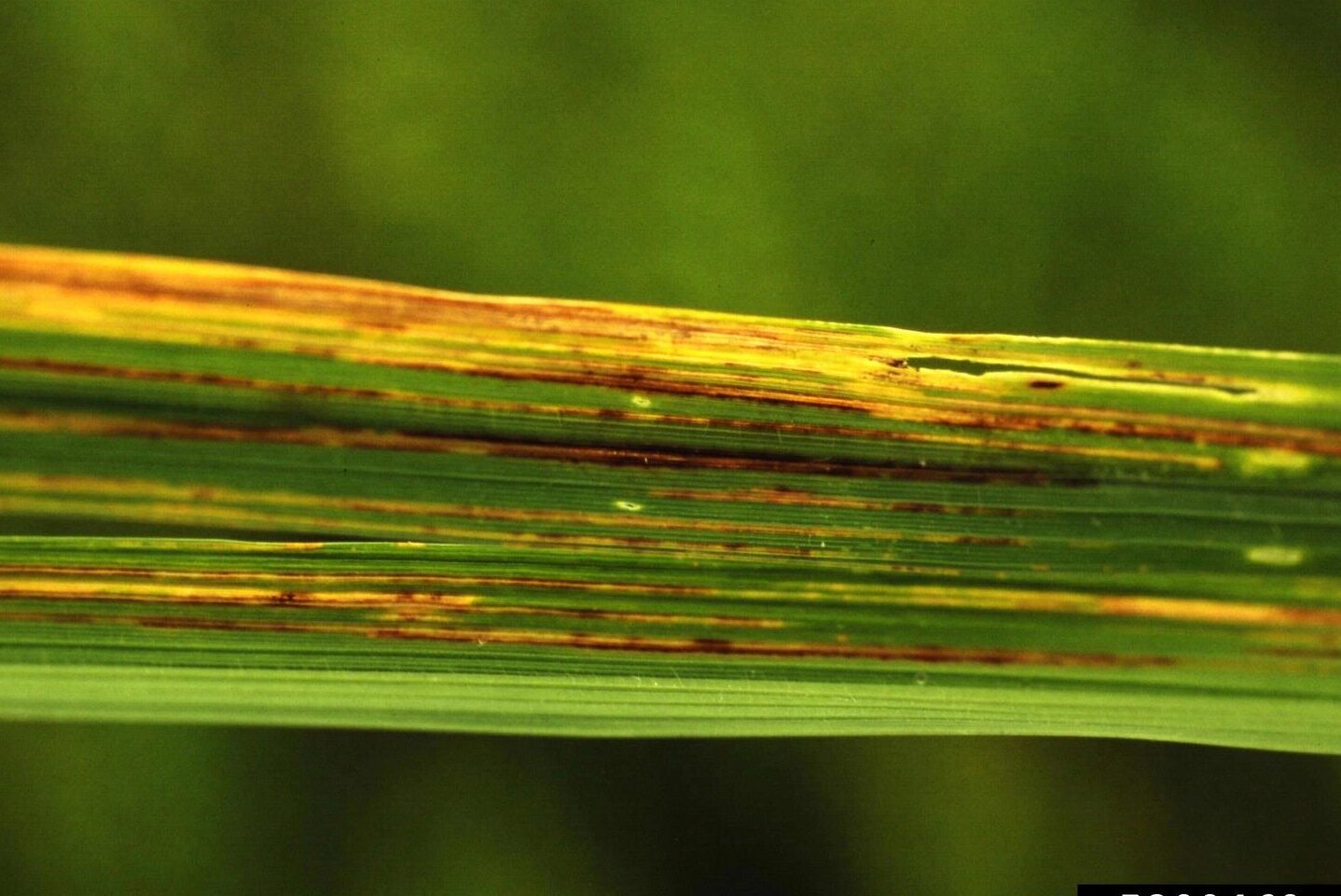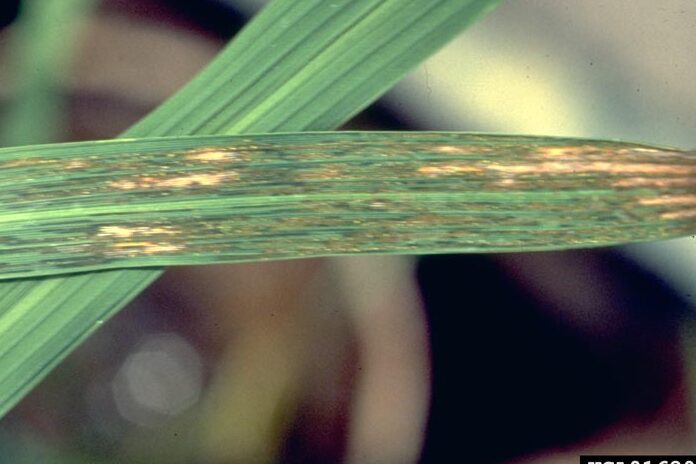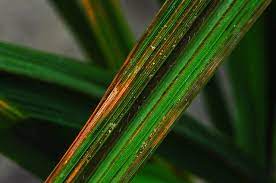Bacterial Leaf Streak is caused by Xanthomonas oryzae pv. oryzicola, is a significant bacterial disease that affects rice plants. This disease is commonly referred to as bacterial leaf streak and can have notable impacts on rice production.
The pathogen responsible for this disease, Xanthomonas oryzae pv. oryzicola, is a bacterium that infects the rice plants, leading to characteristic symptoms and potential yield losses.
Bacterial leaf streak of rice is a particular concern in various regions, including Senegal. The pathogen’s ability to infect and spread within rice crops can result in considerable economic losses for farmers and impact global rice production.
To effectively manage and control this disease, researchers and agricultural experts continuously work on developing strategies such as resistant rice varieties, cultural practices, and the judicious use of pesticides.
Understanding the biology and epidemiology of Xanthomonas oryzae pv. oryzicola is crucial in devising effective measures to mitigate the impact of bacterial leaf streak and ensure the sustainability of rice cultivation worldwide.
Bacterial Leaf Streak of Rice Symptoms:
Symptoms of bacterial leaf streak of rice (Xanthomonas oryzae pv. oryzicola) manifest as follows:

- Initially, during the tillering to the booting stage of the rice plant, narrow and dark-greenish water-soaked streaks become visible on the leaf blades. These streaks occur in the interveinal regions and vary in length.
- As the infection progresses, the streaks extend longitudinally along the leaf, but their growth is limited by the presence of veins. Over time, the color of the lesions changes, turning from yellow to orange-brown.
- One characteristic feature of the disease is the presence of amber-colored bacterial exudates on the lesions. These exudates appear as tiny droplets along the streaks.
- In more severe cases, the streaks may coalesce, leading to the formation of large patches that cover significant portions of the leaf surface. This extensive damage can substantially impact the plant’s overall health and productivity.
- As the disease advances, the lesions take on a brown to greyish-white color and eventually dry up, particularly when the infection is severe.
- The bacterial leaf streak of rice can also affect the reproductive parts of the plant. Infections in the florets and seeds can cause brown or black discoloration and ultimately lead to the death of the ovary, stamens, and endosperm, as well as the browning of the glumes.
It is important to note that these symptoms are similar to those caused by another bacterial pathogen, Xanthomonas oryzae pv. oryzae, which causes leaf blight in rice. The main distinguishing factor between leaf streak and leaf blight lies in the shape of the lesion edges. In bacterial leaf streak, the edges of the lesions are straight, whereas in leaf blight, they appear wavy.
Additionally, bacterial entry into the plant can be facilitated by the damage caused by various insects like leaf rollers, leaf-folders, and hispa beetles, which should be taken into consideration during disease management strategies.
Prompt and accurate identification of the symptoms can aid in implementing effective control measures to minimize the impact of bacterial leaf streak on rice crops.
Also Read This Rice Disease: False Smut of Rice: Symptoms, Impact, Disease Cycle and Management
Bacterial Leaf Streak of Rice Disease Cycle:
Disease Cycle of Bacterial Leaf Streak (Xanthomonas oryzae pv. oryzicola):

- Bacterial Characteristics:
- Xanthomonas oryzae pv. oryzicola bacteria are rod-shaped, Gram-negative, and aerobic.
- They possess a single polar flagellum, enabling their movement.
- The bacteria do not form spores or capsules.
- Optimal growth occurs at 28°C.
- On nutrient agar, bacterial colonies appear pale yellow, circular, smooth, convex, and viscid, with entire margins.
- Factors Favoring Disease Development:
- Presence of bacteria on leaves, in water, or surviving in debris after harvest.
- Warm temperature and high humidity promote disease progression.
- The critical period for disease occurrence is from the maximum tillering to the panicle initiation stages of rice planting.
- Inoculum and Transmission:
- Bacteria are present in infested seeds and straws, serving as a source of inoculum.
- The spread of bacteria in rice fields occurs through mechanical contact, rain, and irrigation water.
- Seed transmission is significant, with bacteria possibly persisting from one summer season to the next. However, transmission may not occur during the winter season due to unfavorable cool and dry weather conditions.
- Infection and Disease Development:
- Bacterial entry into rice leaves can happen through stomata or wounds.
- Once inside the leaf, the bacteria multiply in parenchymatous tissue.
- Disease development is favored by rainy, humid, and moderately to highly warm conditions (28–40°C).
- Survival of Bacteria:
- The bacterium can survive on infested seed and straw.
- In irrigation water, it can persist for short periods.
Understanding the disease cycle of bacterial leaf streak is essential for implementing effective management strategies. By focusing on measures that disrupt the pathogen’s transmission and providing unfavorable conditions for its growth and survival, farmers can reduce the impact of bacterial leaf streak and protect their rice crops from this devastating disease.
Also Read This Rice Disease: Bakanae Disease of Rice: Symptoms, Disease Cycle, Management
Bacterial Leaf Streak of Rice Management:
Preventing Method:
Izumonas-Best Fungicide
Contents: Pseudomonas Fluorescens
IZUMONAS is a biological product consisting of plant growth-promoting rhizobacteria (PGPR), which are naturally occurring bacteria found widely in nature. This unique product is designed to enhance plant defence mechanisms and promote healthy growth. IZUMONAS can be used on all types of crops without leaving any residue on the plants.
Izumil-Best Fungicide
Contents:
- Extract of Streptomyces griseus: 30%
- Extract of Streptomyces violaceus: 40%
- Dissolving agents: 30%
IZUMIL is a remarkable biotech research product that has been developed to activate the natural defence mechanism of plants. By using IZUMIL, plants can better protect themselves against fungal pathogens, improve their physiological functions, and develop resistance against various harmful microorganisms. Similar to IZUMONAS, IZUMIL can be safely used on all crops without leaving any residue.
Modes of Use:
- Seed Treatment: Mix 5-10 ml of IZUMONAS and IZUMIL per kilogram of seeds in an adequate amount of water. Submerge the seeds in this solution and allow them to dry in a shaded area before sowing.
- Seedling Treatment: Combine 100 ml of IZUMONAS and IZUMIL per 20 litres of water. Dip the roots of the seedlings in this solution for approximately 30 minutes prior to transplanting.
- Soil Application: Mix 500 ml of IZUMONAS and IZUMIL with 30 kilograms of farmyard manure (FYM) or soil. Apply this mixture to one acre of land before ploughing or irrigation.
- Foliar Application: Dilute 2-3 ml of IZUMONAS and IZUMIL each in 1 litre of water. Use this solution to spray the entire foliage of the plants, ensuring complete coverage on both sides of the leaves. It is advisable to shake the bottle before use. For best results, spray early in the morning or evening. If a power sprayer is used, double the recommended dosage.
Also Read This Rice Disease: Rice Tungro Disease: Symptoms, Impact, and How to Protect Crops

